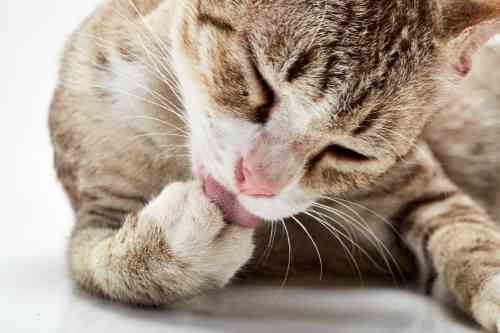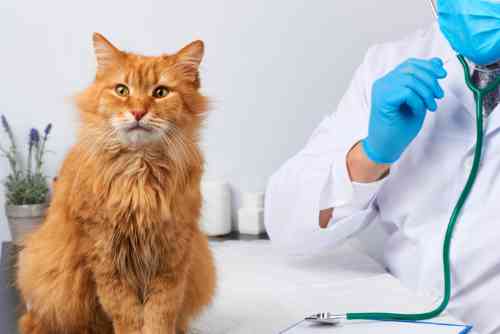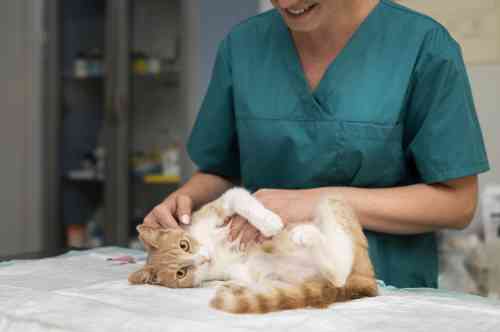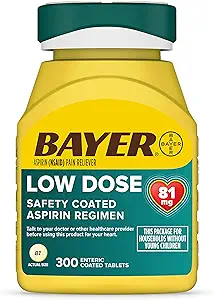Symptoms in a cat that has a sprained leg
And what to do about it
It occurs regularly in cats, a sprained leg. But what symptoms does a cat with a sprained leg show? How can you, as an owner, tell that your cat has a sprained leg? And how do you recognize that there might be more going on than a bruise? In this article we discuss the symptoms you can see if your cat has sprained its leg and we tell you what you can do about it yourself. We also explain which symptoms you should make you visit your vet for further examination of your cat’s sprained leg. So read on.
What symptoms do you notice when your cat has a sprained leg?
The symptoms you notice in your cat can be very mild with a light sprain, but also very extensive with a heavy sprain on your cat’s leg. You may notice the following symptoms to a greater or lesser extent in your cat if he has a sprained leg:
- Your cat is limping or not even supporting its painful leg
- Your cat walks around less than he is used to
- If you examine your cat’s leg, this can be painful for your cat. However, with mild bruises, many cats do not express pain during the examination.
- The leg is swollen and thick
- The leg feels warmer than its normal leg
- The skin of the leg may look redder
- Your cat licks its leg a lot or even bites it
- Your cat may be more withdrawn and want less attention.
- Due to the swelling, his leg may be a bit stiffer.
What is a sprained leg in a cat?
A sprained cat leg and its associated symptoms occur when damage has somehow occurred to the soft tissues of the leg. This means damage to muscles, tendons or skin. Because these tissues become damaged, substances are released from the cells of those tissues. As a result, your cat’s body “knows” that there is a problem in that place in his body that needs to be solved.
All kinds of mechanisms are then set in motion to clean up that damage. For example, the blood vessels are opened up completely so that more blood can flow to that region. That is useful, because more clearing cells of the immune system will come to it. Because the blood vessels open completely, the skin at the site of the sprain usually looks more intense red. In addition, that area also feels warmer. This is also useful because the immune system works better when the temperature is a little higher. So cleaning up the damage will then be a bit easier.
Furthermore, the blood vessels also show larger “holes” through which fluid can leave the blood vessels. This also contains more substances that clean things. But in addition, the increased amount of fluid causes the area that is sprained to swell. That is why swelling is also a symptom of a sprained leg in your cat.
All these reactions ensure that after a week or so your cat’s leg will have fully recovered and can perform its function properly again.
What symptoms should you NOT see in a cat with a sprained leg?
There are a number of symptoms you may noticem, but that you shouldn’t see if your cat has just a sprained leg. Maybe something else is going on. The question is always whether a leg is “just” sprained, or whether there is more to it. For example, a leg can also be broken. Or there is an infection in his leg.
Symptoms of a broken leg
In some cases it is difficult to distinguish between a broken leg and a sprained leg. It is also not always possible for a veterinarian to tell with certainty without taking an X-ray. But in case of the following symptoms you can be sure that a leg is broken:
- The leg has a very abnormal position
- The lower part of the leg dangles from the upper part of the leg
- There is a bone protruding through the skin
- Your cat drags its leg on the ground (not always broken, but still a reason to go to your vet)
Symptoms of an infection or abscess
In case of an infection in the leg, there is usually an abscess. In that case, a bacteria has gotten under the skin (often as a result of a fight with another cat) and your cat’s body is now trying to clean it up. It does this by sending pus cells there. About 1 or 2 days after a fight, you will notice that your cat is limping extremely bad. The following symptoms are characteristic of an abscess:
- Your cat usually has a fever (rectal temperature higher than 102.5º F)
- Your cat doesn’t want to eat properly, even if you put it in front of him and he doesn’t have to walk towards it
- You often feel a soft swelling at the site of the abscess. When you press on this swelling, your cat usually feels enormous pain, so don’t press too hard.
- You often see a wound in the middle or you see that the skin in that center spot looks different
- After a few days the abscess will burst and a lot of foul-smelling, bloody and purulent fluid will come out. Strangely enough, your cat will have less pain after bursting and is clearly feeling better.
What causes a sprained leg in a cat?
As we already mentioned, there is tissue damage in the event of a sprained leg in the cat and you notice the associated symptoms. This damage always occurs as a result of an accident. For example, a collision with a car or bike. Or as a result of a fall from a somewhat greater height. But tissue damage can also occur as a result of a fight with another cat or dog. And don’t forget the angry neighbor who kicked your cat because your cat was wandering around in his or her garden. Well, they exist unfortunately.
How long does it take for the symptoms of a sprained leg in a cat to subside?
The period it takes for the leg to heal can vary greatly. This depends on which tissues are damaged and which symptoms you have seen. One cat is completely healed after a few days of taking it easy. The other one takes a month or two.
In general, it is not clearly visible from the outside which tissues are damaged. But if there has only been a stretching of the muscles, healing will be quick. However, if there is a tear in a muscle or damage to a tendon, healing of your cat’s sprained leg and the associated symptoms may take a month or two.
Treatment of a sprained leg in a cat
Do you think that there is no broken leg? And does your cat show any symptoms that could indicate an abscess? So, for example, no fever or little appetite? And isn’t there an extreme limp? Then you don’t necessarily have to go to your vet. Although it is always the safest option, in this case you can also just wait and see what happens and treat it yourself with the following tips.
Rest
In order for the symptoms of a sprained leg to heal as much as possible, it is important that your cat does not exercise too much. So try to keep him indoors and don’t let him climb and jump too much. Cats that exercise a lot indoors sometimes even benefit from placing them in a crate. Their leg will then get the most rest and will heal the fastest. Make sure the crate is large enough to have a place for your cat to lie down, a small litter box and its food bowls.
Anti-inflammatories
To suppress the pain and repair tissue damage faster, CBD oil is suitable for use in cats. CBD oil (also known as hemp oil) is known to have an anti-inflammatory effect and suppress pain. However, make sure you use a product that is suitable for cats. The products for human use may contain substances that kill cats. In addition, the concentration for human use is many times higher than the concentration for cats. If desired, you can use CBD oil long-term to treat the symptoms of a sprained leg in your cat.
Aspirin
If your cat is really in a lot of pain and you don’t want to go to the vet, you can treat your cat with Aspirin for a few days. NB!! NO PARACETAMOL, IBUPROFEN OR OTHER PAIN KILLS FOR PEOPLE!!!. Only aspirin is suitable for giving to cats. Your vet’s painkillers work better for your cat’s pain, but aspirin will certainly take away the worst of the pain.
You may give your cat a quarter of a 100mg tablet once every 2 days (so do not confuse it with 2 times a day!!) for a maximum of 7 days.
What symptoms should make you go to the vet if your cat has sprained its leg?
If your cat does not want to walk or support itself on its leg at all, there may be more going on than a sprained leg. Especially if you also see symptoms that your cat’s leg tends to dangle or is in a strange position, then there is a chance that it is broken. If you notice that your cat does not want to eat or does not want to eat well, it is also important that you visit your vet. Cats do not tolerate not-eating well and are even at risk of dying if they have not eaten for one or two days.
If your cat still uses its leg and you decide to look at it, it is important that you see a clear improvement in its symptoms after a week. The limping should be less and the swelling should have decreased somewhat. If this is not the case or if you are in doubt, it is important that you visit your own veterinarian.
Hopefully, the symptoms of a sprained leg in your cat will disappear quickly
Hopefully the above advice will help you a lot in treating your cat. The sooner he can run around again, the better it will be for all of you. So good luck!







